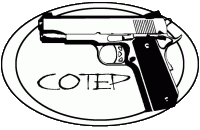
 |
|
| Register | Forums | Blogs | Search | Today's Posts | Mark Forums Read | Donate |
 |
 |
 |
|
#5
|
|||||
|
|||||
|
I really wish the news sources would cite the actual newsletter released by the ATF when they write pieces like this, and then perhaps do some research before writing such an inflammatory piece.
I swear sometimes we are our own worst enemy. Nitrocellulose with a concentration greater than 12.6% nitrogen is, and has ALWAYS been a high explosive. The Department of Transportation granted the exception for wetted nitrocellulose, not the ATF. Most, but not all smokeless powder for small arms ammo is less than 12.6% nitrogen. Single base powders tend to be under the 12.6%, while double or triple base powders can be higher. Powder used for artillery pieces is almost always higher than 12.6%. Most large powder manufacturers already have type 1 or type 2 powder magazines - a magazine contains fires and explosions should they occur. Also, most of them store Nitrocellulose "wet" because it is less likely to ignite when stored in bulk. Either the BATFE is either clarifying their point, or they are going to start looking closer at how the manufacturers store their powder. They have also acknowledged that they will grant variances, just like they always have. Here is the the article, word for word from the ATF. https://www.atf.gov/file/106536/download Note: Bold text added by me. Quote:
__________________
There are no dangerous weapons; there are only dangerous men. To speak without thinking is to shoot without aiming. Last edited by AFJuvat; 08-31-2016 at 09:16 AM. |
| Thread Tools | |
| Display Modes | |